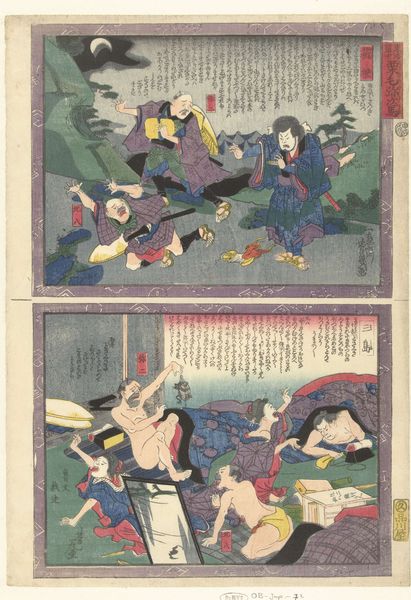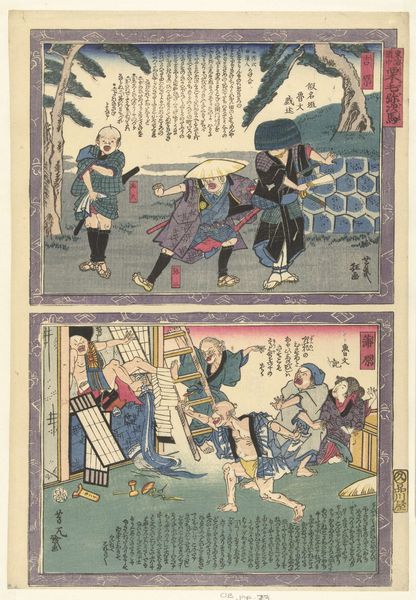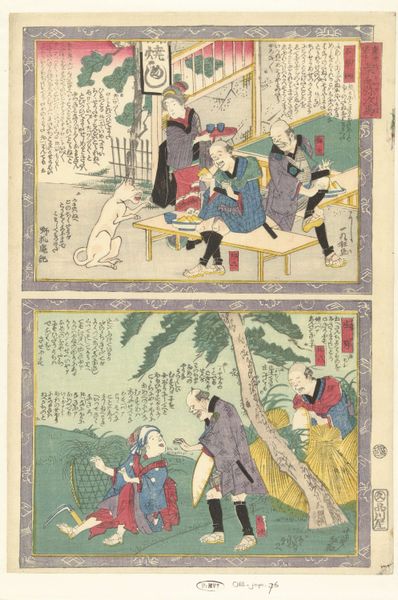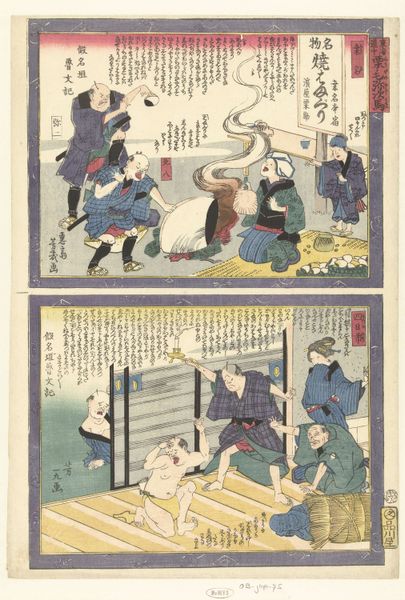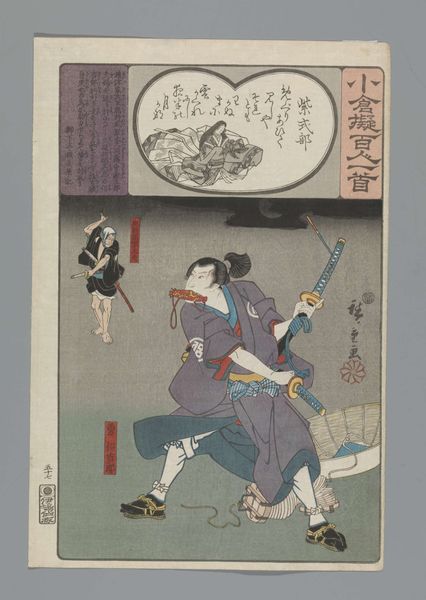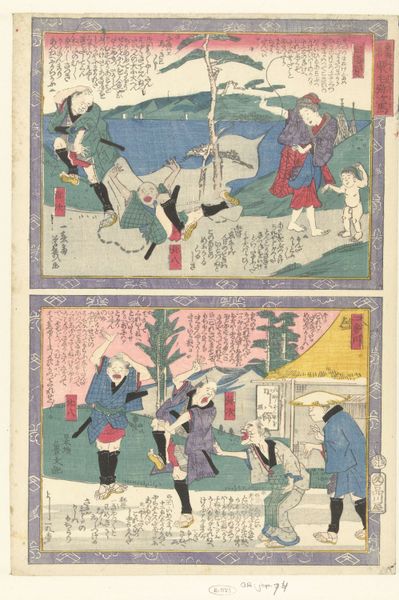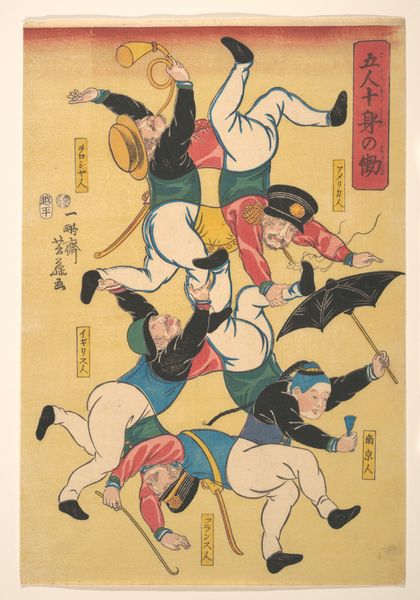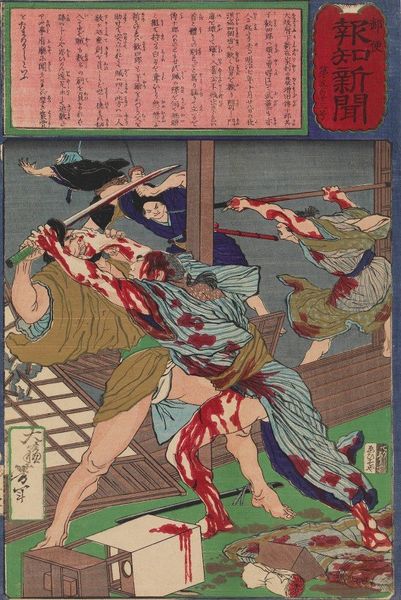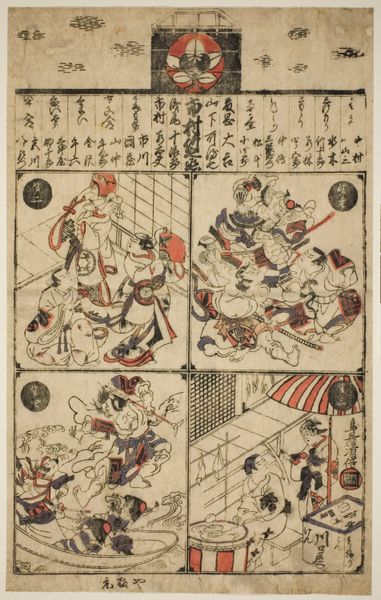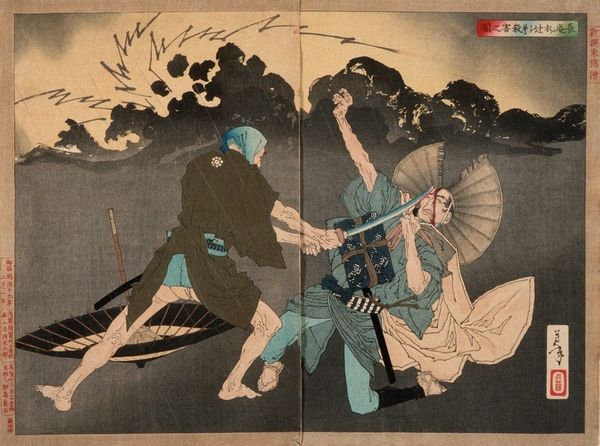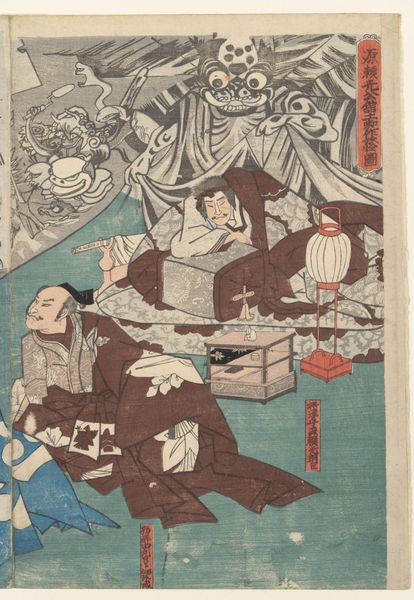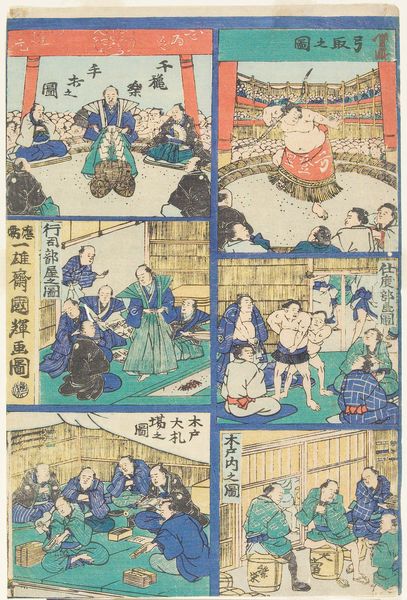
print, woodblock-print
#
narrative-art
# print
#
asian-art
#
ukiyo-e
#
figuration
#
coloured pencil
#
woodblock-print
#
genre-painting
Dimensions: height 375 mm, width 265 mm
Copyright: Rijks Museum: Open Domain
Curator: Here we have Utagawa Yoshiiku’s woodblock print, “Kameyama en Seki”, dating back to 1860. It's currently held in the collection of the Rijksmuseum. Editor: My first impression is organized chaos. The upper register feels almost festive, even a little rowdy. The figures contrast starkly with those caught in the stormy scene below. Curator: The print employs the ukiyo-e style popular during the Edo period. Consider its role in disseminating popular culture at a time when literacy rates were rising among commoners. It allowed for mass production and consumption of imagery. Editor: And the woodblock technique itself! Notice the texture—achieved through carving and layering colors. It is interesting how printmaking, often seen as a more democratic medium due to its replicability, carried sophisticated skill and labor. Curator: Indeed. The two scenes represent contrasting aspects of life in transit. The upper scene depicts travelers enjoying entertainment, while the lower captures the harsh realities of travel along the Tokaido Road. Editor: I'm struck by how much texture is achieved, particularly the use of strong lines for the driving rain. It evokes a sense of drama but also speaks to the labour involved in this kind of movement, as both figures strain to brace against the forces. It prompts consideration about material culture on the road. Curator: Note the expressive faces and the dynamism of the figures, very common in ukiyo-e. It shows a certain public understanding and enjoyment of genre scenes in woodblock prints, despite different levels of access in society. Editor: Absolutely, and even in the 'festive' scene, note the detail given to each expression and how different each figure looks. It’s as though the figures’ individuality becomes a crucial ingredient, which I read as important to the piece overall. Curator: The visual narrative and technique were key aspects in communicating popular values and experiences. It also influenced much later Impressionists through circulation. Editor: It underscores the fact that art practices and tastes travel! Thank you, this print shows that production informs narrative in profound ways, enriching our understanding of how stories come to life.
Comments
No comments
Be the first to comment and join the conversation on the ultimate creative platform.
